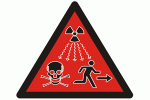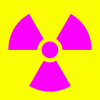I’ve been doing a little bit of liason work between one of the clinical research coordinators at work and K & S Associates. Someone decided to check out the radiation exposure patients were getting from a particular CT study and ordered some TLD chips for the measurement. Had they consulted us first, we’d have told them it probably wasn’t the best way to get the dosimetry data, but they’d already ordered them.
So calibration chips were irradiated with a measured amount of radiation, and the rest were attached to patients who were then scanned. Then they were sent back for reading.
Normally a report is issued back in a couple of days, but this time there were some strange results. The charge readings K & S were getting were rather low (not surprising considering the amount of exposure they were getting) and somewhat inconsistent. TLD’s normally aren’t used for this kind of application either, so the charge stored on the chips was pretty close to the low end of their ability to read reliably. Normally these TLD chips are used to measure therapy doses, which are several orders of magnitude higher than what they would have been exposed to for this project.
So in the course of investigating the discrepancies, and several phone calls to me to confirm the calibration conditions, the tech at K & S learned that both UPS and FedEx have started running all the packages they handle through an x-ray scanner (one of those DHS screening things I’m sure).
The dose to the packages is far from trivial either. The K & S guy figured the TLD chips got anywhere from 0.5 to 1 cGy (50-100 mrad), which is about the radiation you’d get from 3 or 4 chest x-rays. With the TLD exposures the K & S are used to seeing, this amount of radiation is pretty negligible, but relative to the exposures we were using it’s pretty honkin’ big and can definitely skew the results in a big way.
For most packages this is hardly anything to be worried about, but for radiosensitive things like TLD chips and film it can be problematic. Photographic film, likely a non-issue, although perhaps some minor fogging possible.
Bottom line, if you’re shipping anything radiosensitive or photosensitive, UPS/FedEx might not be the best choices.
Like this:
Like Loading...

 It’s a decidedly scarier looking symbol than the
It’s a decidedly scarier looking symbol than the